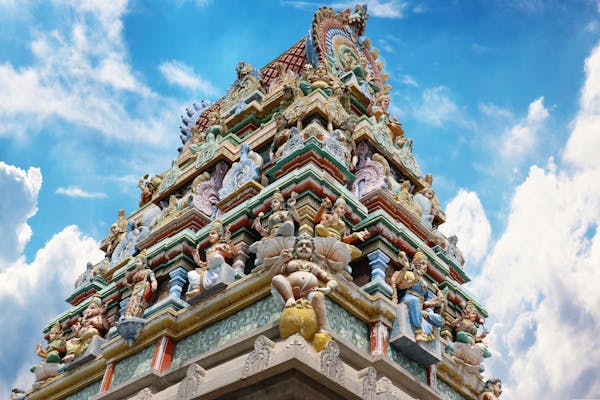¤ 11 minutes Read
Thanjavur
A complete tourist and cultural guide
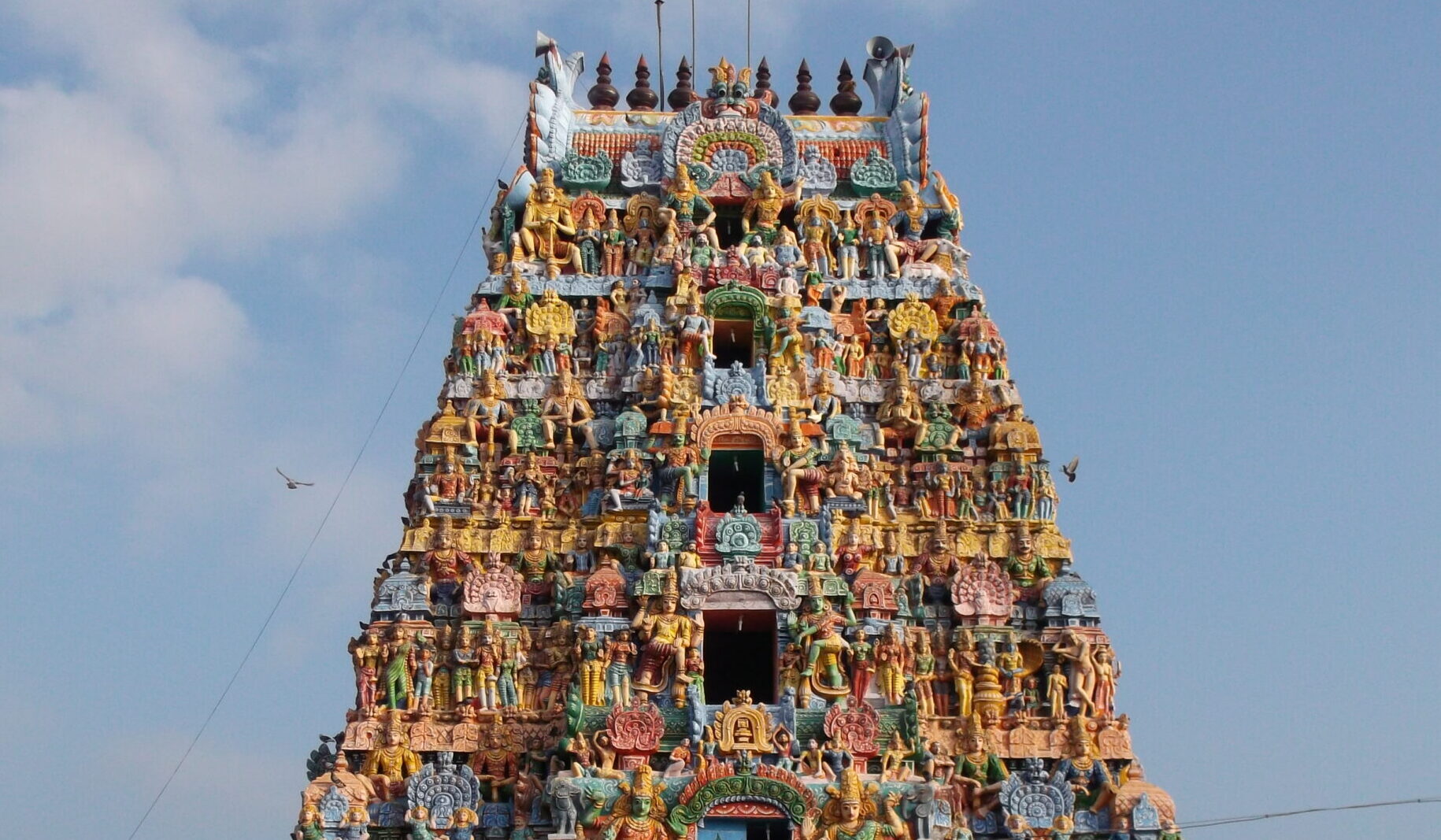
Often called the “Cultural Capital of Tamil Nadu,” is renowned for its magnificent Brihadeeswarar Temple, a UNESCO World Heritage site. The city has been a thriving center of art, music, and architecture since the Chola dynasty, leaving behind timeless legacies in bronze sculptures, classical dance, and paintings. Beyond its temples, Thanjavur offers vibrant markets, traditional crafts, and rich cultural performances, making it a must-visit destination for history lovers and art enthusiasts alike.
Wiki Link: Thanjavur
Must-Visit Attractions in Thanjavur
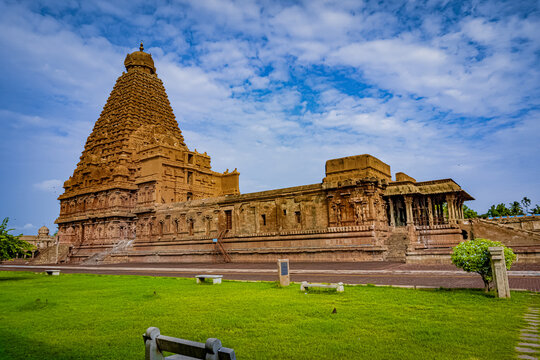
Brihadeeswarar Temple
A UNESCO World Heritage Site, built by Raja Raja Chola I, is an architectural marvel. Known for its towering vimana, intricate carvings, and grand sculptures.

Maratha Palace
Built in the 16th century, houses royal halls, libraries, and galleries. Preserves rare manuscripts, while the art gallery showcases Chola bronzes and murals.

Saraswathi Mahal Library
One of Asia’s oldest libraries, it contains rare palm-leaf manuscripts, historical texts, and literature in multiple languages.

Schwartz Church
Built in 1779 by Raja Serfoji II for a Danish missionary, a symbol of cultural harmony. Its simple architecture and serene ambiance offer a peaceful retreat.
Major Attractions Nearby Thanjavur

Gangaikonda Cholapuram
Located about 70 km, this temple was built by Rajendra Chola I. It rivals Brihadeeswarar in scale and beauty, with stunning sculptures.

Darasuram Airavatesvara Temple
A UNESCO World Heritage site, this temple is famed for its detailed stone carvings and mandapam shaped like a chariot. It’s a masterpiece of Chola art.

Kumbakonam
Known as the “Temple Town,” Kumbakonam is filled with ancient temples, sacred tanks, and cultural festivals. It’s also famous for its unique degree coffee and traditional crafts.

Swamimalai Murugan Temple
One of the six abodes of Lord Murugan, situated on a hillock near Kumbakonam. Pilgrims climb 60 steps, symbolizing the 60 Tamil years, to seek blessings.
Things to do in Thanjavur
rom exploring classical music and dance to shopping for unique handicrafts, the city ensures a memorable experience for every traveler.

Bharatanatyam Performances
Enjoy the classical dance form, which originated in Tamil Nadu. Performances often depict mythological stories with expressive movements and music.

Shop for Thanjavur Paintings
Famous worldwide, Thanjavur paintings feature vibrant colors, gold leaf work, and depictions of deities. They make for exquisite souvenirs and collectibles.
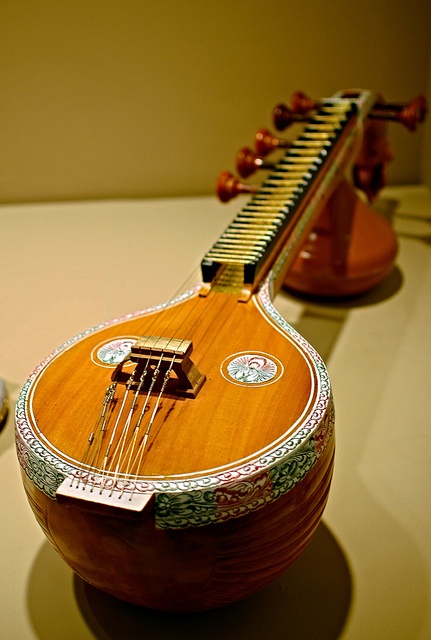
Explore Veena Craftsmanship
The Tanjore Veena, a traditional string instrument, is crafted here with precision. Visiting local workshops offers insight into this centuries-old art.
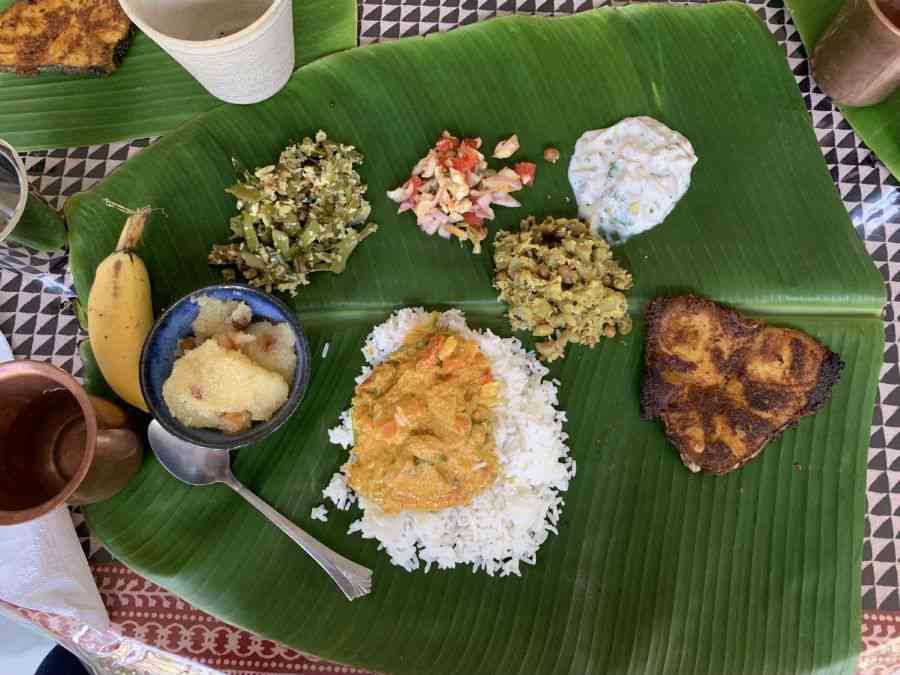
Traditional Thanjavur Cuisine
Savor authentic South Indian meals served on banana leaves. Dishes like sambar, rasam, and local sweets highlight the region’s rich culinary heritage.
The Performing Art of Thanjavur
Celebrated as a cradle of South Indian performing arts, with a legacy that has shaped classical traditions for centuries. The city is the birthplace of Bharatanatyam, one of India’s oldest dance forms, known for its grace, storytelling, and devotional essence. The royal courts of the Chola and Nayak rulers also nurtured Carnatic music, giving rise to many legendary composers like the Trinity of Carnatic music—Tyagaraja, Muthuswami Dikshitar, and Syama Sastri—who were associated with Thanjavur. The region is equally renowned for the Tanjore Veena, a classical string instrument perfected here, and for temple music traditions that blend rhythm with devotion.
Gaana
Carnatic music
Folk Music
Major hub for Carnatic music, enriched by legendary composers like Tyagaraja, Muthuswami Dikshitar, and Syama Sastri. The city is also home to the iconic Tanjore Veena, a classical string instrument perfected by local artisans. Temple hymns, devotional songs, and traditional percussion like the mridangam add depth to its rich musical heritage.
Bharatanatyam
Kolattam
Karakattam
Birthplace of Bharatanatyam, one of India’s oldest and most revered classical dance forms. Known for its intricate footwork, graceful expressions, and storytelling through gestures, it flourished under the patronage of the Chola and Nayak rulers. Temple performances often depicted tales from Hindu epics, blending devotion with artistry.

City Vibes - Timeless Spiritual Charm
Exudes a vibrant cultural aura, blending history, art, and spirituality. The streets are lined with ancient temples, bustling markets, and workshops where artisans craft Thanjavur paintings, bronze statues, and musical instruments. Festivals bring the city to life with classical dance, Carnatic music, and devotional celebrations.
The aroma of traditional South Indian cuisine wafts through local eateries, while the serene temple courtyards offer moments of reflection. Thanjavur’s charm lies in its ability to merge royal grandeur, artistic excellence, and everyday life seamlessly, offering visitors a deeply immersive cultural experience.
Heritage of Thanjavur
Often called the “Rice Bowl of Tamil Nadu,” is steeped in history and culture, with heritage dating back to the Chola dynasty. The city’s crown jewel is the Brihadeeswarar Temple, a UNESCO World Heritage site, showcasing the architectural genius of the Cholas. Thanjavur was also a major center for art, music, and literature, giving rise to the classical Bharatanatyam dance and Carnatic music traditions. Its Maratha and Nayak rulers further enriched the city with palaces, libraries, and bronze craftsmanship.

Cuisine of Thanjavur
Famous for its authentic Tamil cuisine, offering rich flavors, traditional recipes, and meals served on banana leaves

Thanjavur Sambar
A hearty lentil-based stew with tamarind and aromatic spices, Thanjavur sambar is a staple in local meals. Served with rice or idli, it’s a flavorful introduction to Tamil cuisine.
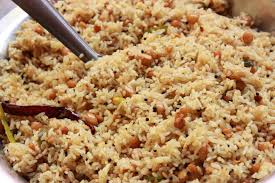
Puliyodarai
This tangy and mildly spiced rice dish is flavored with tamarind, curry leaves, and mustard seeds. It’s often prepared for festivals and temple offerings.

Adai (Lentil Pancake)
A nutritious and crispy pancake made from mixed lentils and rice, served with coconut chutney or jaggery. It’s a popular breakfast or snack item in Thanjavur.

Thanjavur Laddu
Famous for its taste and texture, these laddus are made from gram flour, sugar, and ghee. Often prepared during festivals, they are a symbol of sweetness and tradition.
Shopping in Thanjavur
Shopper’s paradise for traditional arts, crafts, and souvenirs that reflect its rich cultural heritage. From paintings to musical instruments, every item tells a story of craftsmanship and history.

Thanjavur Paintings
Classical paintings are known for their vivid colors, intricate designs, and gold foil embellishments. They often depict Hindu deities and make decorative pieces or gifts.
Bronze Statues
Famous for its Chola-style bronze sculptures, particularly of Lord Nataraja. These statues showcase exceptional craftsmanship and are highly valued by collectors.

Tanjore Dolls
These iconic roly-poly dolls are hand-painted and balanced to dance or wobble with movement. They are a unique souvenir representing local art and culture.

Musical Instruments
Known for crafting traditional instruments like the Veena. Visitors can buy intricately made instruments as decorative pieces or for musical use.
Tourist's Handbook
The best time to visit Thanjavur is during the winter months, from November to February, when the weather is cool and pleasant. This period is ideal for exploring temples, palaces, and cultural sites without the discomfort of heat or humidity. Festivals like Maha Shivaratri and local temple celebrations during this time add a vibrant cultural experience. Avoid the peak summer months (April to June) due to intense heat and the monsoon season (July to September) for heavy rains.
-
Stay Aware Around Temples – Temple grounds can be crowded and slippery; wear comfortable footwear and be cautious while climbing steps or walking on stone surfaces.
-
Beware of Overpriced Guides – Only hire guides recommended by hotels or official tourism offices; avoid overly pushy offers.
-
Avoid Late-Night Solo Walks – Stick to well-lit and busy streets, especially if unfamiliar with the city.
-
Respect Local Customs – Dress modestly, remove shoes in temples, and always ask before taking photos of priests or locals.
-
Drink Bottled Water – Prefer sealed bottled water to avoid stomach issues, especially during hotter months.
Exploring Thanjavur is best done using a mix of local transport and walking. Auto-rickshaws and tuk-tuks are convenient for short distances between temples, markets, and attractions. For longer trips, you can hire taxis or cabs, which are widely available. Walking through the city is ideal for experiencing the vibrant streets, artisan workshops, and local bazaars. Bicycle rentals are also popular for a leisurely tour of nearby cultural sites and heritage spots.
-
Overpriced Guide Services – Always negotiate rates in advance or hire guides through hotels or official tourism offices.
-
Souvenir Shop Pressure Sales – Compare prices before purchasing Thanjavur paintings, bronze statues, or handicrafts.
-
Temple Donation Scams – Confirm any ritual or offering charges before participating.
-
Fake Entry Fees – Entry to most temples is free; avoid paying “extra” fees from touts.
-
Overpriced Transport – Agree on auto-rickshaw or taxi fares before starting your ride.
Popular Thanjavur Blogs
- The Roaming Rhyme
- Places to visit in Thanjavur
- Places to visit nearby Thanjavur
- India’s most popular destination
- India’s archaeological marvels
Recommended articles
- Uttar Pradesh Cultural guide
- Places to visit in Varanasi
- Places to visit nearby Varanasi
- India’s most popular destination

